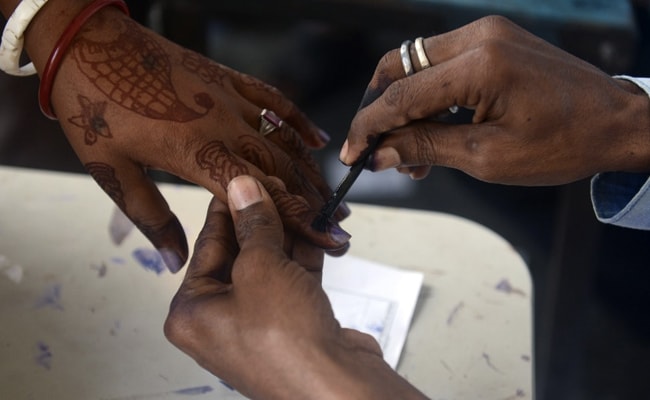
In Telangana, 0.74 per cent of the electors opted for NOTA (Representational)
New Delhi:
The counting of votes in three out of four states on Sunday showed that less than one per cent of the voters exercised the ‘none of the above’ (NOTA) option in the just-concluded assembly polls, according to the election commission.
Assembly polls were conducted in five states and while the counting of votes in Madhya Pradesh, Rajasthan, Chhattisgarh and Telangana was held on Sunday, votes will be counted in Mizoram on Monday.
In Madhya Pradesh, 0.99 per cent of the voters went for the NOTA option out of total voter turnout of 77.15 per cent. In neighbouring Chhattisgarh, 1.29 per cent of the electors pressed the NOTA button. Here, the voter turnout was 76.3 per cent.
In Telangana, 0.74 per cent of the electors opted for NOTA. The state registered 71.14 per cent of voter turnout.
Similarly, in Rajasthan, 0.96 per cent of the voters exercised the NOTA option. It had recorded 74.62 per cent turnout.
Talking to PTI on the NOTA option, Pradeep Gupta of Axis My India said NOTA has been used from .01 per cent to a maximum of two per cent. If anything new is introduced, its effectiveness depends on its result or performance.
“I had written to the government that if NOTA’s effectiveness has to be made in the real sense, then NOTA should be declared as the winner if the maximum number of people use this option,” he said.
Gupta was referring to the ‘first-past-the-post’ principle followed in India where a candidate who gets the maximum number of votes is declared the winner.
He also said that people who have been rejected by the people should not be allowed to contest the poll in such a situation where NOTA prevails over others.
“If this happens then people make the right use of none of the above options… otherwise it is a formality.
Introduced in 2013, the NOTA option on electronic voting machines has its own symbol – a ballot paper with a black cross across it. After the Supreme Court order in September 2013, EC added the NOTA button on the EVMs as the last option on the voting panel.
Before the Supreme Court order, those not inclined to vote for any candidate had the option of filling what is popularly called form 49-O. But filling out the form at the polling station under Rule 49-O of the Conduct of Elections Rules, 1961, compromised the secrecy of the voter.
The Supreme Court had, however, refused to direct the Election Commission to hold fresh polls if the majority of the electorate exercised the NOTA option while voting.
(Except for the headline, this story has not been edited by NDTV staff and is published from a syndicated feed.)




